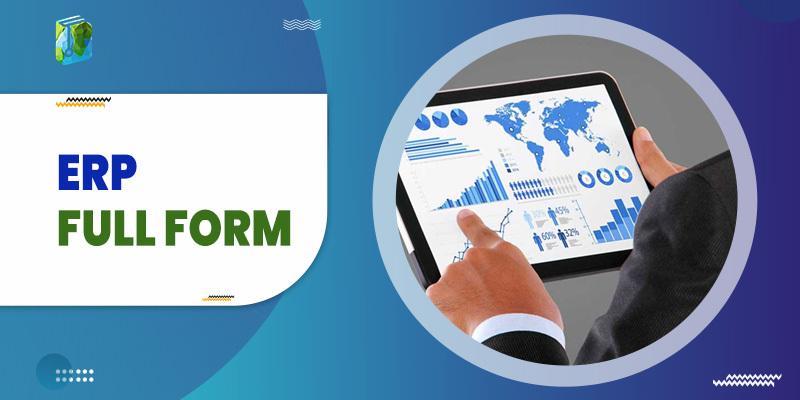ERP Full Form is Enterprise Resource Planning. It is a business management software implemented to streamline the business functions within a centralized and integrated system. It is used to automate back-office tasks and smoothly run cross-departmental workflows, providing efficiency, lower costs, and profitability.
ERP History
Gartner introduced the term ERP. The concept of ERP can be traced back to the 1960s, when it covered the scope of inventory management and control in the manufacturing sector. The engineers created Software Programmes to monitor inventory, reconcile balances, and report on status.
By the 1970s, it was scheduling production processes brought under the system naming it as Material Requirements Planning (MRP) systems. In1980s, the scope of MPR became broader, including more manufacturing processes, prompting to regard it as Manufacturing Resource Planning.
By 1990, these systems expanded to cover other back-office functions like accounting and human resources, setting the stage for ERP.
Features of ERP systems
- The main feature of all ERP systems is a shared database that supports business processes used by different business units.
- ERP encompasses integrating and simplifying multiple processes used by different units, such as data collection, sophisticated manufacturing, and customer service tasks. It uses quality and innovative concepts to meet the demand of the volatile technological infrastructure.
- Cloud-based system approach of ERP makes its implementation and management easier and more affordable by enabling real-time reporting and business intelligence.
- Software-as-a-Service (SaaS) solutions, a variety of cloud service methodologies, use the underlying cloud model to deploy applications to end-users via the internet, making data and application interfaces available through any connected device.
Modules of ERP
- HRM– This module generally contains standard HRMS tools like a timesheet, time recorder, a database for employee records, job profiles, skills matrix, performance reviews, and payroll system. The payroll system is tightly integrated with the financial management module to manage wages and allowances.
- Financial management– This module manages capital inflow and outflow. It covers standard Accounting and Finance transactions like expenditures, general ledger, balance sheet, bank reconciliation, tax management, and payments and produces financial reports for different departments and business units.
- Sales and Marketing– The module manages sales inquiries, quotations, sales orders, and invoices along with taxation rules, shipping tracker, sales force automation, marketing automation, and e-commerce CRM. The CRM module enhances the quality of customer service by managing leads, opportunities, and customer issues.
- Manufacturing- This module helps in the areas such as product planning, materials sourcing, daily production monitoring, and product forecasting by managing bills of material, production scheduling, shop floor control, and distribution planning.
- SCM– This module manages the supply chain, including purchase order management, product flow from production to consumer
- Purchasing– This module controls materials procurement, including supplier listings, quotation requests, and analysis, purchase orders, stock updates, goods receipt notes, etc.
Types
ERP systems are grouped by functional levels, business size, and deployment, such as-
- Generalist ERP
- Open-source ERP
- Vertical ERP
- Web-Based ERP
Advantages of ERP
- It increases the customer base by providing them with high-quality services.
- It facilitates employees to do their job more efficiently.
- It automates core business operations, thereby providing time to employees to focus on the more critical initiative to boost productivity.
- ERP software is flexible enough to be installed in any country due to its feature of multiple languages and currencies support.
- Selecting the right solution by the right vendor can provide a good return on investment by reducing the operation costs.
- It helps improve the accuracy, consistency, and security of the data with the help of built-in resources and firewalls.
Disadvantages
- The system involves high implementation and maintenance costs. (High initial investment) as well as employees training costs to use the system efficiently
- If not applied correctly, it can be a mess for the company.
Successful ERP Implementation
- A thorough understanding of the reason behind installing ERP
- Analysis of business processes and needs.
- Get experts in resource and project management.
- Get the right ERP vendor
- Provide sufficient training
- Monitor ROI.
Top ERP Vendors
- SAP
- Oracle
- Microsoft
- Epicor
- Infor
- QAD
- Lawson
- SAGE, IFS
Conclusion
ERP Full Form is Enterprise Resource Planning. It is a business management software implemented to streamline the business functions within a centralized and integrated system. The concept of ERP can be traced back to the 1960s, when it covered the scope of inventory management and control in the manufacturing sector.
People are also reading:

